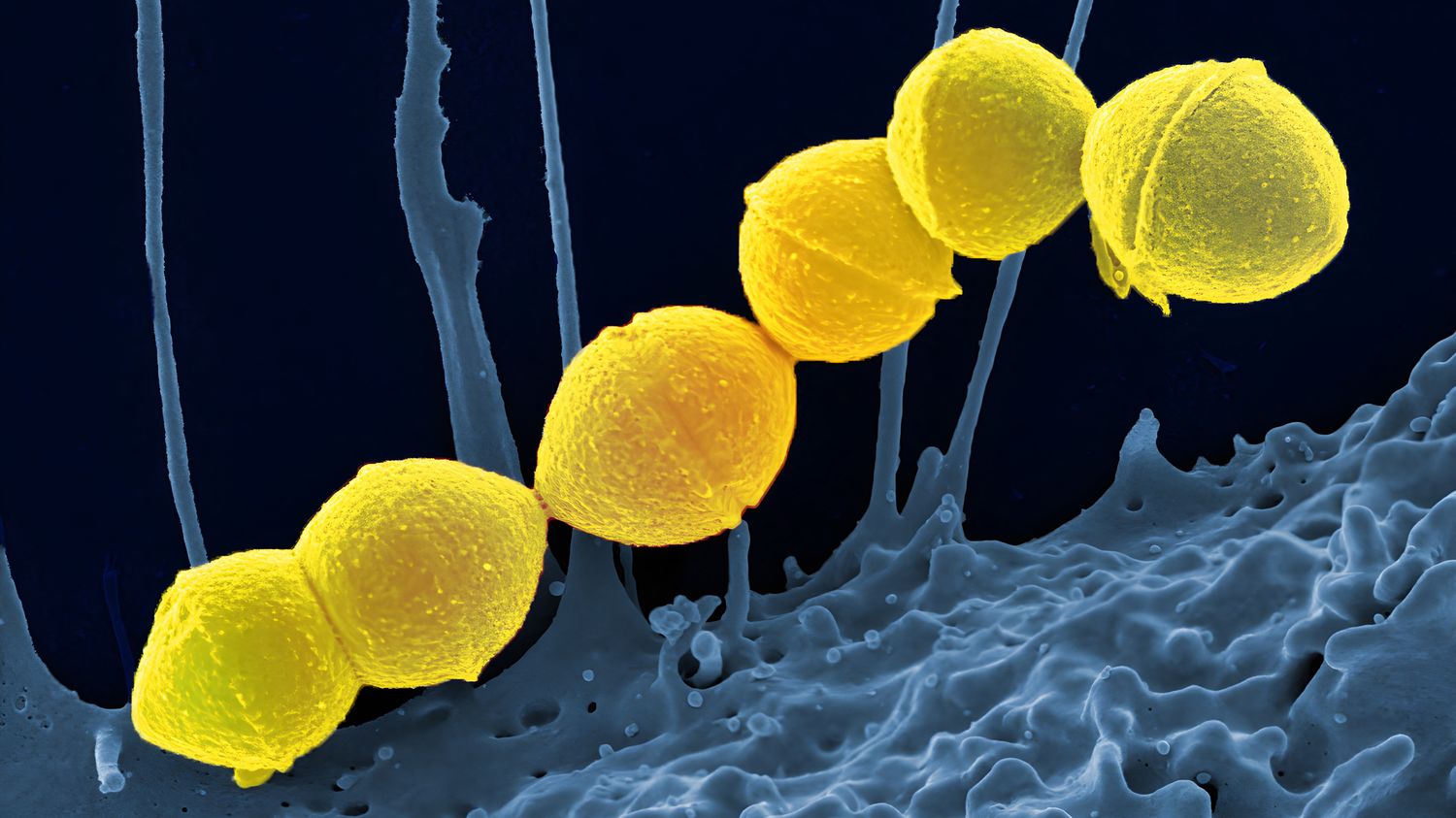Since January, the Japanese archipelago has recorded a record number of group A streptococcal infections, fatal in around a third of cases.

Published
Reading time: 5 min

Japanese authorities tried to allay fears on Friday during a press briefing by the government spokesperson. But concern is growing at home and abroad as cases of streptococcal infections have increased in 2023 and even more so since the start of the year.
The government of the capital, Tokyo, alerted residents about the strong spread of this bacteria, reported Sunday March 24 The Japan Times. Enough to revive fears, after the cancellation on Saturday by Fifa of a qualifying match for the 2026 World Cup between Japan and North Korea, in a context of serious health concerns. Here’s what we know about it.
A “flesh-eating” bacteria, with acute but rare complications
Group A Streptococcus (GAS) bacteria is a human pathogen that is transmitted through the air (droplets) or direct contact (nasal secretions, skin lesions). According to data from Public Health France (PDF document)in 80% of cases it causes benign infections, such as angina, impetigo or skin lesions.
More rarely, it can cause dermohypodermatitis or necrotizing fasciitis (a disease “which results in complete destruction of soft tissues”, which earned it its nickname of flesh-eating bacteria, recalls Santé Publique France), or streptococcal toxic shock syndrome (SCTS). These two acute complications are rare, but can be fatal.
SCTS releases toxins that can lead to organ failure. The first symptoms are sore throat, fever, diarrhea, vomiting and lethargy. It is fatal in 40% of cases, according to Santé Publique France, and in one in three cases, according to the American Centers for Disease Control and Prevention. According to Santé Publique France, dermohypodermatitis or necrotizing fasciitis is lethal in 20 to 45% of cases.
An outbreak of cases in Japan
The Japanese archipelago has recorded a notable increase in the number of SCTS. In less than three months, from January 1 to March 13, 2024, 474 cases of this syndrome were recorded, according to the National Institute of Infectious Diseases in Japan. This is more than half of all cases of SCTS recorded in the country during 2023 (941), a record year, as the Japanese newspaper headlined on January 18 The Asahi Shimbun. The elderly are considered to be more at risk, but deaths among patients under 50 are on the rise, notes the Institute, which reports 21 deaths in this age category in 2023, with a rate of mortality of a third.
This outbreak of cases was relayed in the press around the world, to the point that the Japanese government sought on Friday to put concerns into perspective, particularly after North Korea’s refusal to host the national football team. On Thursday, Pyongyang indicated that it did not wish to organize a match between their two teams, qualifying for the 2026 World Cup, and initially scheduled for March 26. Fifa finally announced on Saturday the cancellation of the match.
Concern is spreading to the Asian continent: on Friday, the South Korean disease control and prevention agency warned travelers to Japan of the risk of SCTS, underlines The Japan Times.
Japanese government spokesman Yoshimasa Hayashi declined to comment Friday on Pyongyang’s surprise move, but insisted Japan was not the only country affected by SCTS. Since the end of the Covid-19 pandemic, “the number of patients with respiratory tract infections has increased in various countries, including Japan”, he declared during his regular press briefing. But uncertainty remains over the cause of this outbreak of cases, as the Japanese Minister of Health admitted to the press on January 22, reports The Japan Times.
An increase in cases also noted in France
Waves of invasive group A streptococcus infections also occurred in 2022-2023 in Europe, including France, North America and Australia.
In France, a Public Health France report noted in March 2023 an increase in invasive group A streptococcal infections in children and adults. Among those over 18, the number of cases observed from October to December 2022 was significantly higher than the reports for the previous four years. The frequency of cases of infections associated with SCTS was increasing, going from 16.5% over the period 2017-2021 to 21% in December 2022, the organization further noted.
Experts speak of a drop in immunity after Covid
Health authorities are closely monitoring the situation, but they also recognize that the mechanism of SCTS is still unknown by medicine. While waiting for science to progress, in January the Japanese Minister of Health called on the population to continue to use barrier gestures, such as washing their hands regularly and wearing a mask in busy public places.
Some medical experts hypothesize that this outbreak of infections caused by the bacteria is due to a drop in collective immunity after the Covid-19 episode. “During the pandemic, the circulation of infectious diseases was slowed by the health measures put in place across the world,” explains Masahiro Kami, doctor and president of the Medical Governance Research Center at the Toyo Keizai site. “This has led to a decline in the number of people with immune protection, leading to spikes in infections in recent times.”
In the British daily The Guardian, Ken Kikuchi, professor of infectious diseases at Tokyo Women’s Medical University, points to an additional factor. “In my opinion, more than 50% of Japanese people have been infected with Sars-CoV-2. The immunological state of people who have recovered from Covid-19 could modify their sensitivity to certain micro-organisms”he believes.
